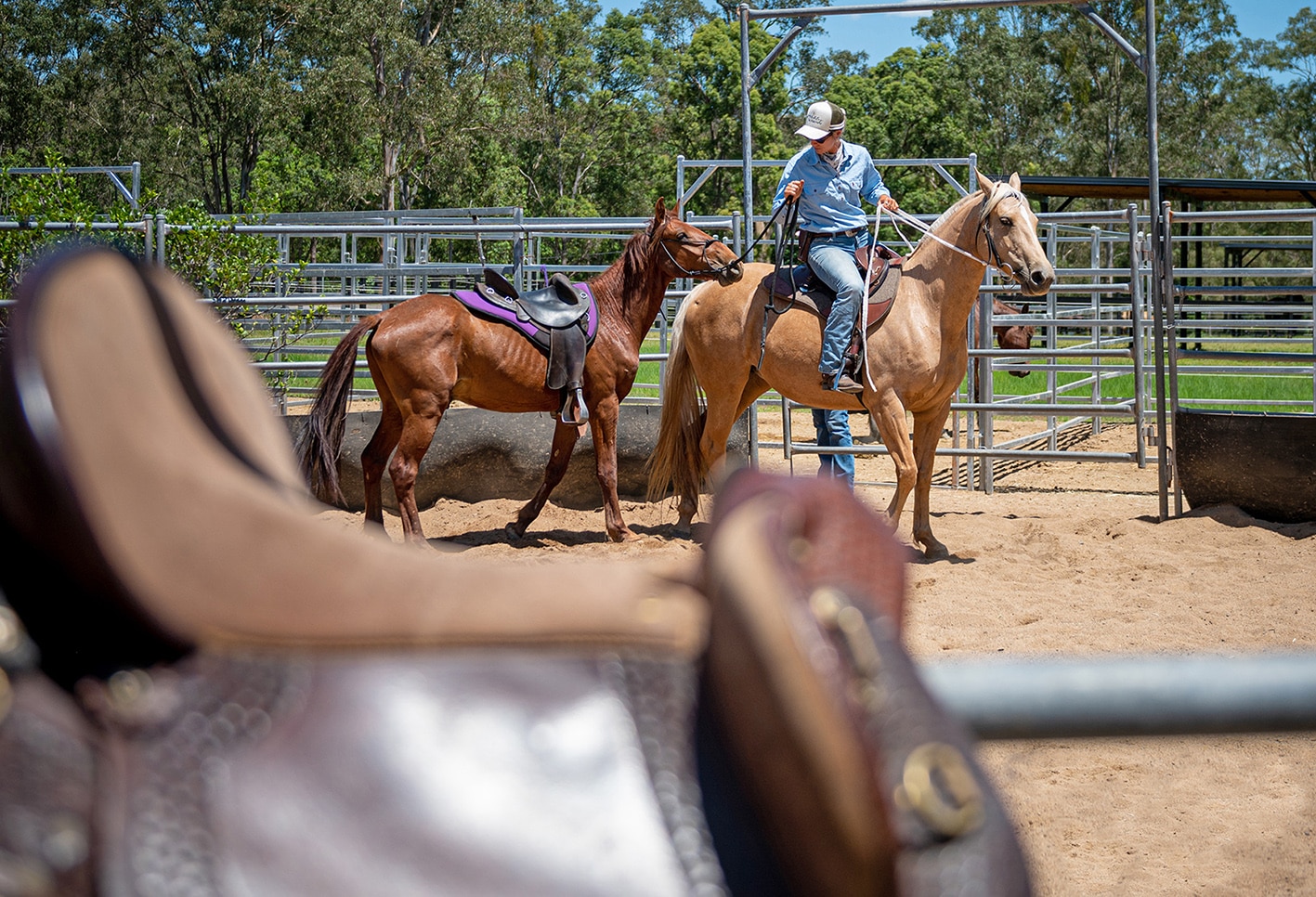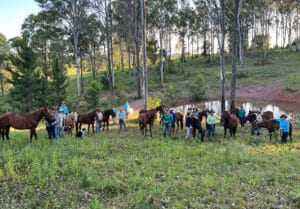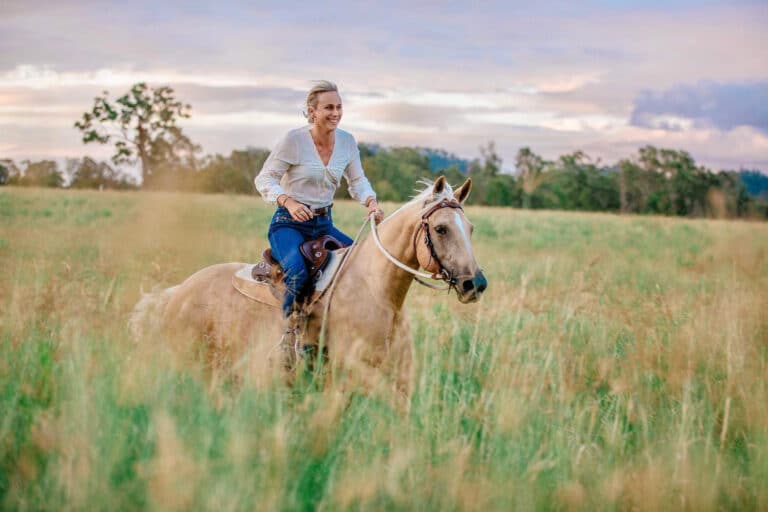
Brumbies have often featured in films and literature, but there’s much more to them than star status. AMANDA MAC spoke to The Brumby Project’s Anna Uhrig.
How many Brumbies are there in Australia? That’s not meant as a trick question, by the way, but it’s certainly one that’s tricky to answer. Predominantly the descendants of escaped or abandoned horses brought to this continent by early European settlers, some sources put the figure at a conservative 400,000.
Today, herds of Brumbies, more correctly known as bands or mobs, are scattered across the country. Thanks to The Man From Snowy River, probably best-known are those found in the Australian Alps, including Victoria’s Alpine National Park, and NSW’s Barrington Tops National Park and Kosciuszko National Park, where they have unfortunately attracted more than their fair share of bad publicity.
Well able to deal with a variety of climates, Brumbies roam free in most Australian states and are found in particularly large numbers in the Northern Territory and Queensland’s Carnarvon National Park. Occasionally mustered and put to use as stock horses, trail and pleasure horses, campdrafters, show jumpers and even eventers, they remain, Anna Uhrig contends, a vastly underrated and largely underutilised resource with huge potential.
Anna is the founder and CEO of The Brumby Project (TBP), which is located on a property just outside Amamoor, a tiny rural village roughly 15 minutes’ drive from Gympie in Queensland.
However, she hasn’t always called Amamoor home, nor Australia for that matter. As a four-year-old, Anna and her family arrived here from Germany, which is when her horse-obsessed gene (possibly a throwback to her grandfather because no one else in her immediate family is interested in horses) really kicked in. “I think I was around six when I started having riding lessons. I’d been begging to have a horse pretty much from when I started talking, and my mother told me that when we got to Australia, if I saved up I could by a horse. I hope she hasn’t come to regret that because I bought my first pony when I was around seven or eight and haven’t been horseless since!”
Of course, her parents hadn’t much of a clue when it came to horses and riding, so Anna was left pretty much to her own devices. Not deterred, she continued with her lessons, joined Pony Club and did what every Pony Club kid does, trying out all the disciplines, having a lot of fun along the way, and learning by trial and error, which the pony she’d purchased, an eight-year-old Welsh Mountain cross Arabian chestnut gelding, was happy to help out with. “He was pretty naughty but he definitely taught me how to ride! He had Queensland Itch, so he wasn’t the best looking in show,” Anna recalls, “but he was mighty.” She eventually sold him – he’s now 31 and still going strong.

Next came Beau, a little stock horse bought from family friends who trained in natural horsemanship. It was through these friends that Anna had the opportunity to ride many different horses, in between working various part-time jobs while at school and later earning a university degree in ecology.
But it was while she was in high school that she decided to break in a Brumby as part of a Year 12 independent research project – and became totally hooked on the breed in the process. Fresh out of school, she then went to a Brumby starting camp in Central Queensland (which she now owns and operates as TBP), where she caught and broke in Riva, a Brumby mare who is still her main horse.
So, what is it about Brumbies that Anna finds so appealing? “I just love that they’re so trainable, hardy and versatile. There’re lots of different styles of Brumby and there’s so much potential in them all – we need to acknowledge that a lot more. Most of the Brumbies I’ve worked with have become great all-rounders. They suit a wide range of disciplines including trail riding, campdrafting, show jumping, and Western dressage. A friend of mine has five Brumbies from TBP and has had great success using them as therapy horses.”
Because they’re from the wild and have had no previous contact with humans, Brumbies initially require extra work to get them to the halter stage, but from there they progress in their education much as any other horse. And for Anna, that extra work is a bonus: “If you’re breaking them in from the wild, that makes your partnership with them even more special because everything they’re taught has been taught by you. It’s like working with a blank canvas,” she says.
Added to that strong bond is their hardiness, their great feet, and a sharp intelligence that makes them quick to learn. “They look after you out on the trail, and they’re really honest,” Anna adds. “While some horses can be a bit fluffy, Brumbies are focussed, there’s no beating around the bush with them.”
If the idea of owning a Brumby is starting to appeal to you, then the camps and clinics offered by TBP are your ticket to an exciting new adventure. “We give everyone the opportunity to work with and, if they want, to own a Brumby.” Anna explains. All skills are catered for with introductory and intermediate clinics through to 10-day Brumby starting camps in which you can choose a Brumby to take from unhandled to first ride, and then home with you.
The Brumbies destined for TBP are trapped and brought in from the wild with the help of Dr David Berman, a Research Fellow in Wildlife Ecology at the University of Southern Queensland. David knows Brumbies well and has trained and competed a Brumby in show jumping events at the Sydney Royal. Although the trapping method he uses takes time and patience, it’s designed to be as stress-free as possible, as is done without the use of helicopters, lassos, or other frightening tactics.

Over the years, Anna and her team have rehomed many hundreds of Brumbies – numbering 160 in the last financial year alone. “The horses I’m working with at the moment are the Toolara Tuan Forestry Brumbies. They’re at risk of getting hit by cars on a busy road that runs through the forest,” Anna tells me. “The aim is to rehome them to avoid any bad traffic accidents.”
Although Anna does rehome individual Brumbies, she prefers to concentrate on running the camps: “My main goal in the 10-day camp is to teach the skills people need to work with their Brumby, from being unhandled to having a first ride, getting them on a float, tying up, and trimming their feet.”
Participants in these camps, usually held twice a year, are limited to ten, while the shorter three-day camps cater for only five people to allow for more one-on-one time with each participant.
An ecologist by profession, Anna is aware of both sides of the Brumby culling debate. Her main concern, however, is for a sustainable outcome to be achieved. Meanwhile, she has one take-home message: “Give a Brumby a go! Come along to a camp and see what it’s all about. It’s so much! You can learn a lot from Brumbies, and it will add even greater depths to your horsemanship.”
For more information on their camps and clinics, visit The Brumby Project, or call Anna on 0409 925 526.



